Animal Crossing: The Ultimate 2025 Guide for Island Life
Animal Crossing represents the pinnacle of life simulation gaming, offering players an immersive digital sanctuary where creativity, community, and personal expression flourish. This comprehensive 2025 guide provides strategic insights into optimizing your island experience, implementing advanced gameplay mechanics, and maximizing your virtual investment returns.
The gaming industry recognizes Animal Crossing: New Horizons as Nintendo’s most successful social simulation platform, generating over $2.4 billion (€2.2 billion) in revenue since launch. Understanding the sophisticated economic systems, social dynamics, and technological features within this digital ecosystem requires strategic planning and operational expertise.
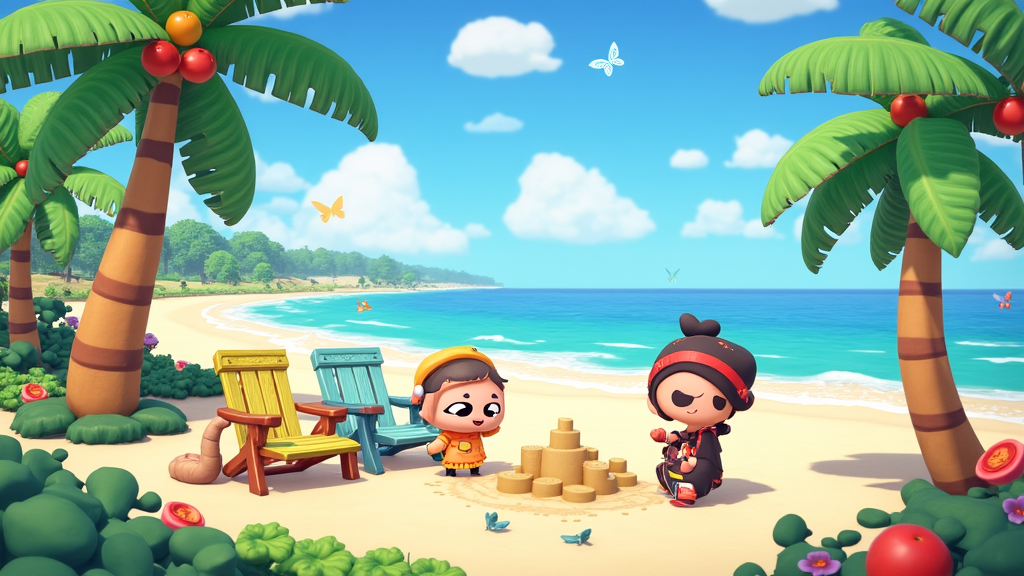
Estimated reading time: 15 minutes
- Animal Crossing: New Horizons offers an endless, relaxing simulation with advanced customization and community-driven experiences.
- 2025 improvements include expanded storage, streamlined tutorials, and more customization tools.
- Success comes from strategic planning in island layout, villager recruitment, money-making, and event participation.
- Leverage top community resources for design inspiration, trading safety, event calendars, and catalog tracking.
- Try real-world analogs for in-game principles—investment, design, and social interaction.
- What is Animal Crossing? (Definition, Origins, and Appeal)
- How Animal Crossing Gameplay Works (Mechanics Overview)
- Getting Started in Animal Crossing: New Horizons (2025)
- Beginner Tips & Day One Checklist (30+ Must-Knows)
- Island Development & Customization (Infrastructure, Terraforming, Layout)
- Villagers: Types, Friendships, & Recruiting (With Best Villager Examples)
- Making Bells: The Ultimate Money-Making Guide for 2025 (30+ Methods)
- Crafting, Collecting, and DIY Recipes (Strategies & Seasonal Tips)
- 2025 Animal Crossing Event Calendar (Monthly Guide)
- Multiplayer & Visiting Friends (Step-by-Step Play Guide)
- Advanced Gameplay Strategies (Catalog, Breeding, Time Travel)
- Island Design Inspiration & Themed Ideas
- Happy Home Paradise DLC: Features & Vacation Design Guide
- Animal Crossing Community Resources & Tools (Design Platforms, Trading)
- Frequently Asked Questions (Boolean, Definitional, Comparative)
What is Animal Crossing? (Definition, Origins, and Appeal)
Animal Crossing is a real-time life simulation video game series developed by Nintendo, featuring open-ended gameplay centered around building communities, managing resources, and fostering relationships with anthropomorphic characters. The franchise originated in 2001 with Animal Forest for Nintendo 64 in Japan, evolving into a global phenomenon that redefined social gaming paradigms.
The series distinguishes itself through persistent real-world time integration, meaning your virtual town continues evolving even when you’re not actively playing. This revolutionary concept creates authentic investment psychology, where players develop genuine emotional connections to their digital assets and community members.
| Game Title | Release Year | Platform | Global Sales |
|---|---|---|---|
| Animal Crossing (GameCube) | 2002 | GameCube | 2.4 million |
| Wild World | 2005 | Nintendo DS | 11.7 million |
| City Folk | 2008 | Wii | 3.4 million |
| New Leaf | 2012 | Nintendo 3DS | 12.3 million |
| New Horizons | 2020 | Nintendo Switch | 42.8 million |
Animal Crossing’s distinctive appeal stems from stress-free achievement systems, collaborative social interactions, and unlimited creative expression opportunities. Players experience psychological satisfaction through completing daily tasks, building relationships, and designing personalized environments without competitive pressure or failure consequences.
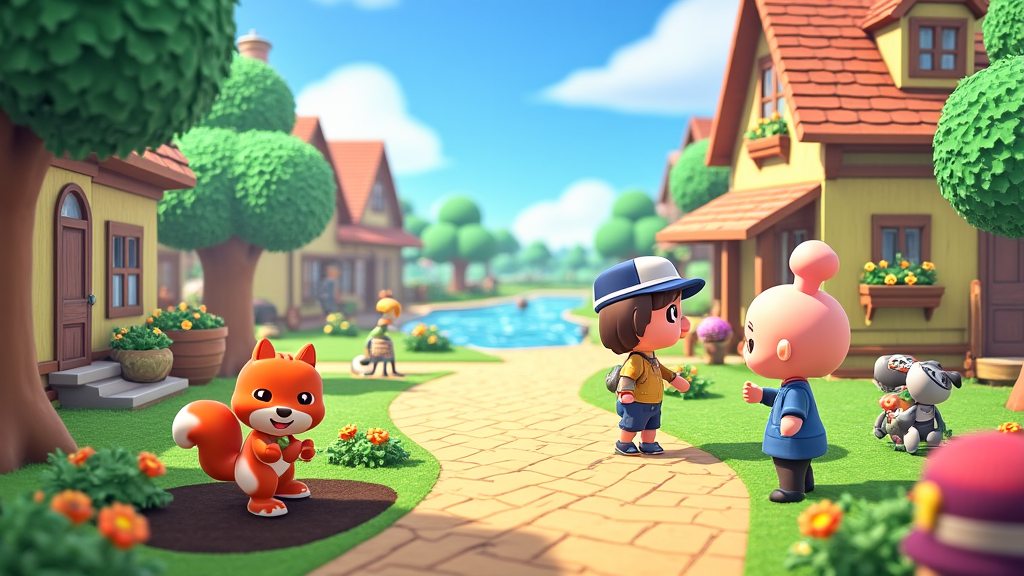
How Animal Crossing Gameplay Works (Mechanics Overview)
Animal Crossing operates on five fundamental gameplay pillars: resource collection, relationship building, creative customization, financial management, and time-based progression. These interconnected systems create sustainable engagement loops that reward both short-term actions and long-term strategic planning.
Real-time mechanics synchronize your gaming experience with actual calendar dates and seasonal cycles. Spring brings cherry blossoms (March-April), summer enables swimming and diving (June-September), autumn features mushroom foraging (September-November), and winter provides snowball crafting opportunities (December-February). This temporal integration ensures your digital investment appreciates through natural progression cycles.
Daily activities include bug catching, fish collection, fossil hunting, flower cultivation, and villager interaction. Each activity generates Bells (in-game currency), Nook Miles (achievement points), or DIY recipes that enhance your island’s infrastructure and aesthetic value. The game rewards consistent engagement while respecting player autonomy through flexible scheduling systems.
Your progression follows open-ended development pathways rather than predetermined objectives. Personal goals might include achieving 5-star island ratings, collecting complete museum exhibits, or designing themed neighborhoods. This flexibility appeals to diverse player psychologies, from completionist collectors to creative architects to social community builders.
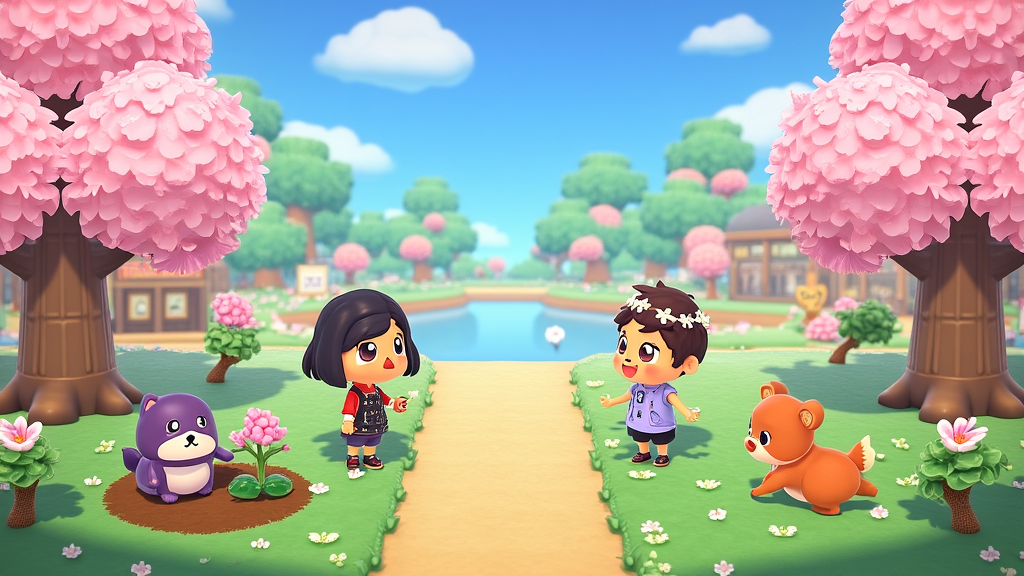
Getting Started in Animal Crossing: New Horizons (2025)
To begin your Animal Crossing journey in 2025, you need a Nintendo Switch console ($299.99/€329.99), the New Horizons game ($59.99/€59.99), and a Nintendo Switch Online subscription ($19.99/€19.99 annually) for multiplayer features. Your initial island setup decisions significantly impact long-term gameplay optimization.
Your first critical choice involves island layout selection from four randomly generated options. Each layout features different river configurations, resident services placement, and airport locations. Consider accessibility between villager homes, museum proximity to central areas, and terraforming potential when making this permanent decision.
Northern Hemisphere and Southern Hemisphere selection determines your seasonal cycle timing. Northern Hemisphere matches North American and European seasons, while Southern Hemisphere aligns with Australian and South American patterns. This choice affects fruit availability, fish spawning schedules, and event timing throughout your gaming experience.
Native fruit assignment occurs randomly among five varieties: apples, cherries, oranges, pears, and peaches. Your native fruit sells for 100 Bells each on your island but commands 500 Bells when sold on islands with different native varieties. This creates natural trading incentives with other players and establishes foundational economic strategies.
2025 updates include enhanced customization options, expanded storage capacity (reaching 5,000 items), and improved online connectivity features. New players benefit from streamlined tutorials, quality-of-life improvements, and expanded content libraries developed over four years of community feedback.
For players interested in exploring more ways to play on Nintendo Switch without purchasing new hardware, especially cloud-based options, Xbox Cloud Gaming allows you to stream games instantly on a range of devices.
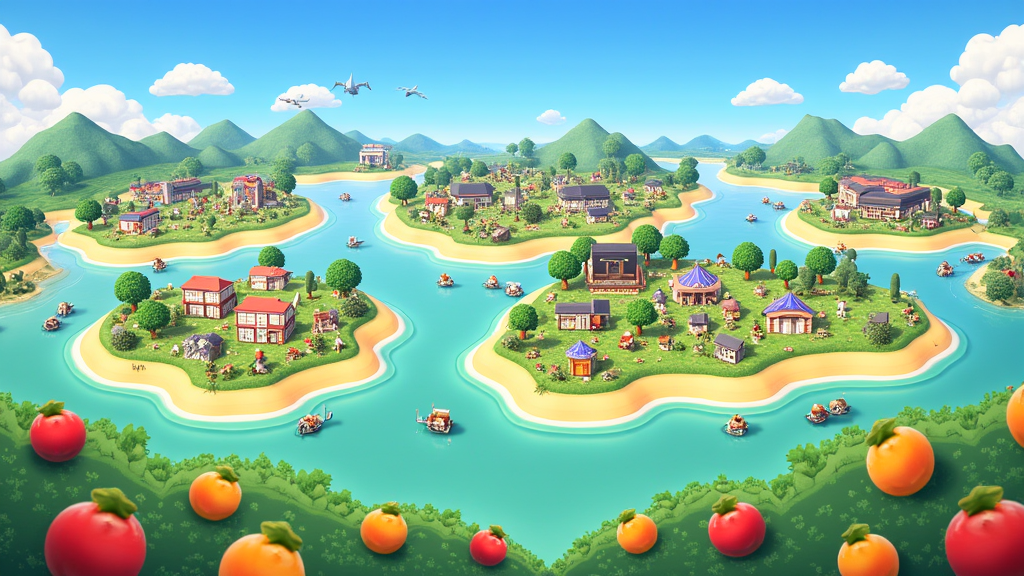
Beginner Tips & Day One Checklist (30+ Must-Knows)
Complete these 35 essential actions during your first week to establish optimal foundation systems and maximize long-term growth potential:
- Collect 10 branches and 10 stones for basic tool crafting requirements
- Gather 3 wood types (hardwood, softwood, regular wood) through tree shaking
- Donate first fish, bug, and fossil to Tom Nook for museum construction initiation
- Schedule daily 6 AM check-ins for maximum daily resource refresh opportunities
- Plant native fruit trees in organized 3×3 grids for efficient harvesting systems
- Establish designated storage areas near crafting stations for workflow optimization
- Learn DIY recipe basics through crafting 5 different tool variations
- Map your island’s hidden fossil spawn points (6 daily locations marked by star patterns)
- Identify money tree planting locations for 10,000 Bell daily profit generation
- Befriend 2 starting villagers through daily gift exchanges and conversation
- Collect 30 iron nuggets for shop construction and tool upgrades
- Establish flower breeding areas with 4×4 grid spacing for hybrid production
- Create efficient pathway systems connecting all major island facilities
- Set up crafting supply stockpiles with 100+ units of basic materials
- Learn fish and bug seasonal availability through Critterpedia tracking
- Master inventory management using storage expansion at residential services
- Understand Nook Miles earning methods through achievement completion
- Plan residential area layouts with 8×8 plot spacing for villager homes
- Establish daily routine optimization balancing all core activities
- Learn turnip market basics for Sunday purchasing strategies
- Create island aesthetic themes aligned with personal design preferences
- Master tool durability management through strategic replacement timing
- Optimize clothing storage systems using wardrobe organization
- Plan infrastructure development sequences for logical progression
- Establish visitor preparation protocols for multiplayer experiences
- Learn seasonal event participation for limited-time rewards
- Create backup save strategies for data protection
- Master camera mode features for documentation and sharing
- Plan villager recruitment strategies for desired personality types
- Establish Bell earning diversification across multiple income streams
- Learn weather pattern recognition for specific spawning conditions
- Create personal achievement tracking for long-term goal management
- Master time zone optimization for event participation flexibility
- Establish trading network connections with other players
- Plan storage expansion strategies for increasing collection needs
These foundational systems ensure optimal resource utilization while building sustainable progression mechanisms for advanced gameplay phases.
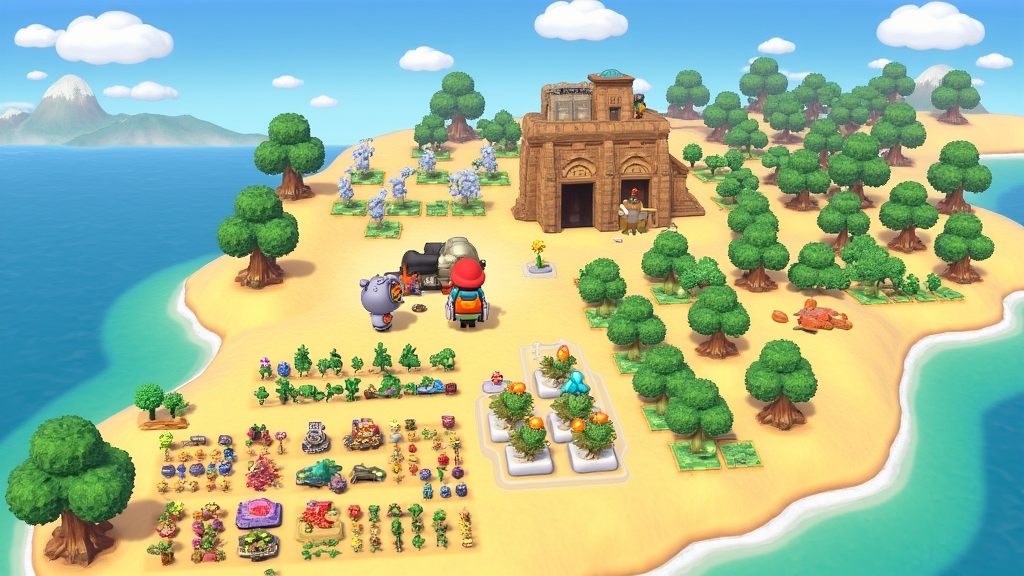
Island Development & Customization (Infrastructure, Terraforming, Layout)
Island development requires strategic infrastructure planning, systematic terraforming execution, and aesthetic design integration to achieve maximum functional efficiency and visual appeal. Successful islands balance practical accessibility with creative expression through methodical development phases.
Terraforming unlocks after achieving 3-star island ratings, typically requiring 7-10 days of consistent development effort. This powerful toolset enables cliff modification, river redirection, pathway creation, and waterway design at 100 Bell per tile modification cost. Advanced terraforming projects can transform entire island landscapes to support complex themes and functional layouts.
Infrastructure optimization follows strategic building placement principles: position resident services centrally for equal access, locate shops near transportation hubs for convenience, and space villager homes 8 squares apart for optimal feng shui. Museum placement near educational areas, airport proximity to commercial zones, and recreational facilities in scenic locations enhance overall island flow and user experience.
Island rating systems evaluate scenery (decorative items and natural beauty), development (infrastructure and facilities), and environment (cleanliness and organization) across 5-star performance metrics. 3-star ratings unlock terraforming and K.K. Slider concerts, 4-star ratings enable hybrid flower spawning, and 5-star ratings generate lily-of-the-valley flowers as prestige indicators.
Popular themed approaches include cottagecore aesthetics (natural materials, rustic furniture, wildflower gardens), modern minimalism (clean lines, geometric patterns, neutral colors), fairy tale fantasy (magical elements, pastel colors, whimsical decorations), and urban industrial (concrete pathways, metal fixtures, city-inspired layouts). Each theme requires specific furniture collections, color palettes, and architectural elements for authentic implementation.
If you’re seeking interior design inspiration outside of the Animal Crossing universe or want to understand retail design principles (perhaps for your in-game shops or cafes), you might enjoy learning how real-world retailers like Best Buy organize their store layouts and customer services. Best Buy store organization and customer services.
Image description: Aerial view of a symmetrical island layout featuring organized residential districts, central plaza areas, and efficient pathway networks connecting all major facilities.
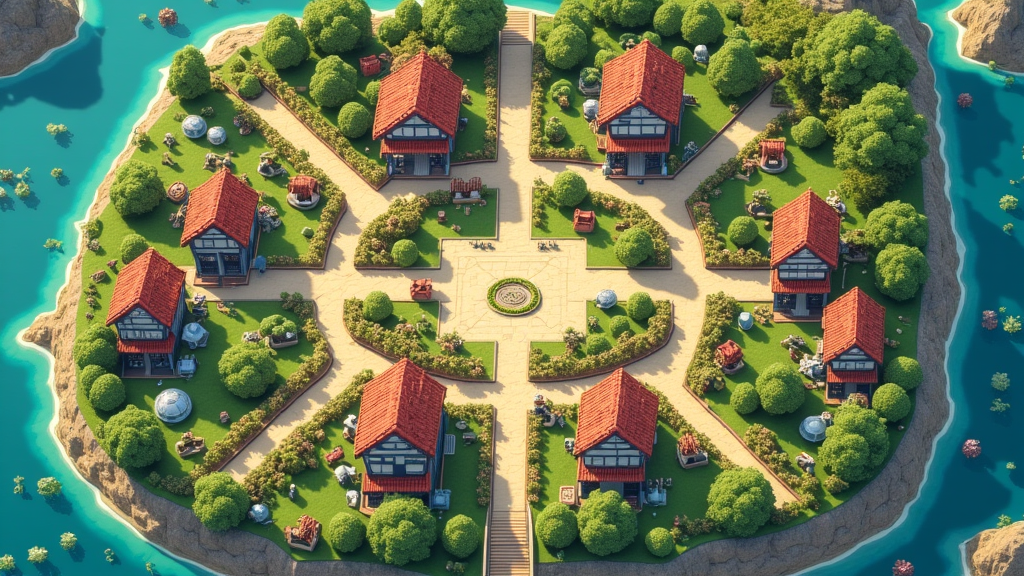
Villagers: Types, Friendships, & Recruiting (With Best Villager Examples)
Animal Crossing features 413 unique villagers representing 35 different species and 8 personality types that determine dialogue patterns, activity preferences, and interaction styles. Understanding personality dynamics optimizes friendship development and ensures balanced community composition for maximum social satisfaction.
The 8 personality types include: Normal (sweet, friendly, motherly), Peppy (energetic, fashion-focused, optimistic), Snooty (sophisticated, elegant, sometimes condescending), Uchi/Big Sister (tough, caring, protective), Lazy (food-obsessed, relaxed, sleepy), Jock (fitness-focused, competitive, enthusiastic), Cranky (grumpy, traditional, wise), and Smug (charming, sophisticated, flirtatious).
Friendship progression involves 6 relationship levels, advancing through daily interactions, gift exchanges, and favor completion. Level 1 (Stranger) unlocks basic conversation, Level 3 (Friend) enables gift giving, Level 5 (Good Friend) provides DIY recipe sharing, and Level 6 (Best Friend) grants photo gifts as ultimate friendship achievements.
Top 10 Most Popular Villagers by 2025 Community Rankings:
- Marshal (Smug Squirrel) – sophisticated personality with elegant home design
- Raymond (Smug Cat) – business-themed aesthetic with heterochromia appeal
- Audie (Peppy Wolf) – energetic personality with vibrant orange coloring
- Judy (Snooty Bear Cub) – cosmic design theme with rainbow aesthetic
- Sherb (Lazy Goat) – food-loving personality with adorable expressions
- Zucker (Lazy Octopus) – takoyaki-themed design with unique tentacles
- Marina (Normal Octopus) – sweet personality with pink coloring
- Ankha (Snooty Cat) – Egyptian theme with golden accessories
- Bob (Lazy Cat) – classic design with purple coloring
- Stitches (Lazy Bear Cub) – patchwork teddy bear aesthetic
Villager recruitment methods include: Mystery Island Tours (2,000 Nook Miles each), campsite visitors (random weekly spawns), Amiibo card scanning (guaranteed recruitment), and online trading with other players. Strategic recruitment targeting specific personalities ensures balanced community dynamics and maximizes daily interaction variety.
If you enjoy meeting quirky personalities in Animal Crossing, you might also be interested in discovering the best deals and unique services at retail stores, which can enhance your real-life shopping adventures. For a guide to finding promotions and secret deals—think of it as real-world “friendship rewards”—explore how to maximize savings at Best Buy.
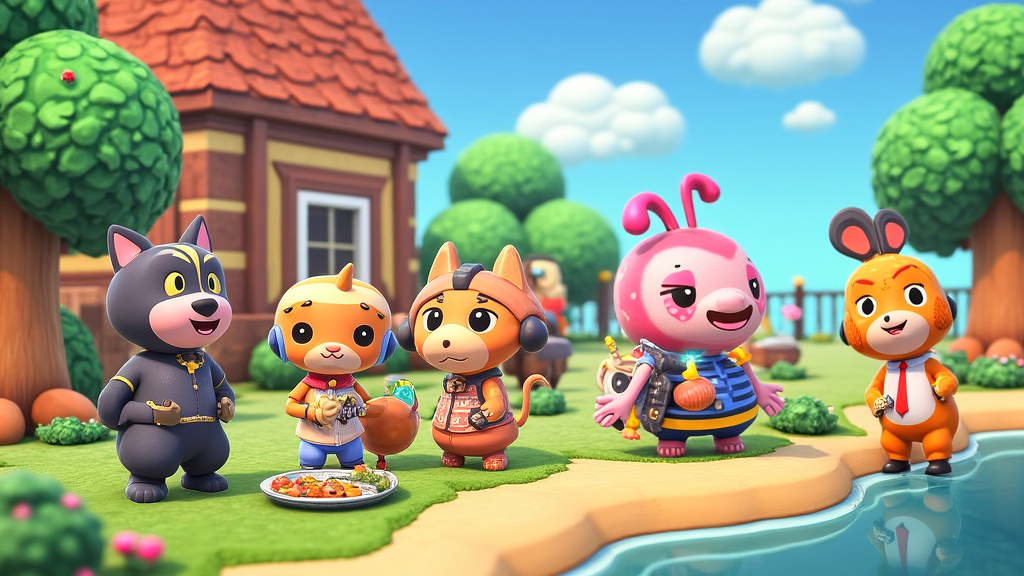
Making Bells: The Ultimate Money-Making Guide for 2025 (30+ Methods)
Successful Bell accumulation requires diversified income strategies, market timing optimization, and resource management efficiency to generate sustainable wealth for island development projects. The most profitable players implement multiple simultaneous earning methods while minimizing time investment per Bell earned.
Here are 35+ proven Bell-earning strategies ranked by profitability and effort investment:
| Method | Effort Level | Daily Potential | Risk Level |
|---|---|---|---|
| Turnip Trading | High | 500,000+ Bells | High |
| Money Trees | Low | 30,000 Bells | None |
| Hot Items | Medium | 50,000 Bells | None |
| Fossil Sales | Low | 15,000 Bells | None |
| Fish/Bug Tournaments | Medium | 100,000 Bells | None |
| Tarantula/Scorpion Farming | High | 200,000 Bells | None |
| DIY Item Sales | Medium | 75,000 Bells | None |
| Fruit Selling | Low | 25,000 Bells | None |
| Flower Breeding/Sales | Medium | 40,000 Bells | None |
| Shell Collection | Low | 8,000 Bells | None |
Advanced money-making techniques include foreign fruit arbitrage (selling non-native fruits for 5x value), hybrid flower cultivation for premium sales, rare fish/bug timing optimization, and turnip market pattern recognition for maximum profit windows.
Turnip trading represents the highest-profit opportunity, requiring Sunday purchasing at 90-110 Bells each and reselling during price spikes of 400-600 Bells. Pattern recognition identifies 4 market types: Random (unpredictable), Large Spike (400+ Bell peaks), Small Spike (200-300 Bell peaks), and Decreasing (consistent decline). Successful traders diversify across multiple islands and track price patterns through online communities.
Money tree optimization involves burying 10,000 Bell bags in golden soil patches for guaranteed 30,000 Bell returns. Advanced players identify multiple daily money spots and coordinate planting schedules for maximum capital appreciation over 3-day growth cycles.
Hot item identification through Nook’s Cranny provides 2x selling prices for specific crafted items, creating daily profit opportunities for resource-efficient crafting. Popular hot items include wooden tables (6 wood = 1,600 Bells), iron garden tables (5 iron nuggets = 10,000 Bells), and golden tools (gold nuggets = 20,000+ Bells).
For those who enjoy applying efficient resource management and investment strategies, exploring real-world investment guides like how to analyze stocks (such as Nvidia, TSMC, or CrowdStrike) might interest you. Learn more about evaluating earning potential and market patterns by reading about Nvidia’s stock analysis.

Crafting, Collecting, and DIY Recipes (Strategies & Seasonal Tips)
DIY recipe acquisition involves 8 primary sources: villager crafting sessions, message bottles on beaches, balloon gifts, seasonal events, special characters, purchase opportunities, trading with other players, and achievement unlocks. Systematic collection requires daily checking of all sources to maximize recipe discovery rates.
Material farming optimization includes: rock hitting for stone/iron/clay (8 items per rock daily), tree shaking for wood varieties (3 per tree), flower picking for crafting ingredients, and beach combing for shells. Efficiency requires tool durability management and developing consistent harvesting routes across your entire island.
Storage organization becomes critical as collections expand beyond initial 1,600-item limits toward maximum 5,000-item capacity in 2025. Systematic categorization by material types, seasonal requirements, and project needs prevents inventory overflow and enables quick access during crafting sessions.
Seasonal recipe timing affects availability windows:
- Spring (March-May): Cherry blossom recipes (10 days), bamboo series, nature themes
- Summer (June-August): Shell recipes, underwater themes, tropical aesthetics
- Fall (September-November): Mushroom series (limited spawning), autumn colors, harvest themes
- Winter (December-February): Snowflake recipes, festive series, ice themes
Advanced customization requires Customization Kits for color/pattern modifications on furniture and tools. Kit farming through Nook Miles redemption (600 points per pack) enables extensive personalization projects. Custom design integration allows unlimited aesthetic possibilities through pattern uploads and sharing with global communities.
Rare material acquisition includes: gold nuggets (1% rock spawn chance), large star fragments (meteor shower events), seasonal materials (time-limited availability), and NPC-specific ingredients. Strategic stockpiling during availability windows ensures project completion capabilities year-round.
If you enjoy crafting and customization in gaming and are intrigued by powerful AI-driven customization in real-life creative tools, learn how Google’s latest AI voice and text-to-speech technology revolutionizes content creation. Read the AI voice and TTS guide.

2025 Animal Crossing Event Calendar (Monthly Guide)
Animal Crossing: New Horizons features 24 major annual events providing limited-time items, special characters, and unique activities throughout the calendar year. Event participation requires active engagement during specific date windows to access exclusive content and achievements.
| Month | Event | Duration | Special Features |
|---|---|---|---|
| January | New Year’s | Jan 1 | Countdown celebration, special items |
| February | Festivale | Feb 13-15 | Carnival theme, feather collection |
| March | Shamrock Day | Mar 17 | Four-leaf clover hunting |
| April | Cherry Blossom | Apr 1-10 | Sakura recipes, aesthetic themes |
| May | Nature Day | May 1-7 | Environmental awareness activities |
| June | Wedding Season | Jun 1-30 | Photography events, romantic themes |
| July | Bug Off | Jul 3rd Sat | Competition, unique trophies |
| August | Fireworks | Every Sunday | Light shows, custom patterns |
| September | Moon Festival | Mid-month | Astronomical themes, moon viewing |
| October | Halloween | Oct 31 | Costume play, candy collection |
| November | Turkey Day | Nov 26 (US) | Thanksgiving feast, cooking recipes |
| December | Toy Day | Dec 24 | Gift exchange, Santa Claus visit |
Limited-time item collections include: seasonal clothing, decorative furniture, DIY recipes, and wallpaper/flooring options. Missing event windows permanently locks content until the following year, creating urgency for active participation.
Event preparation strategies include: stocking required materials beforehand, clearing schedule conflicts, coordinating with friends for multiplayer events, and organizing storage space for new acquisitions. Advanced players maintain event calendars with preparation timelines to maximize participation efficiency.
Special character appearances during events provide unique interaction opportunities and exclusive item access. Jack (Halloween), Jingle (Toy Day), Franklin (Turkey Day), and Pavé (Festivale) offer event-specific services and rewards unavailable through regular gameplay.
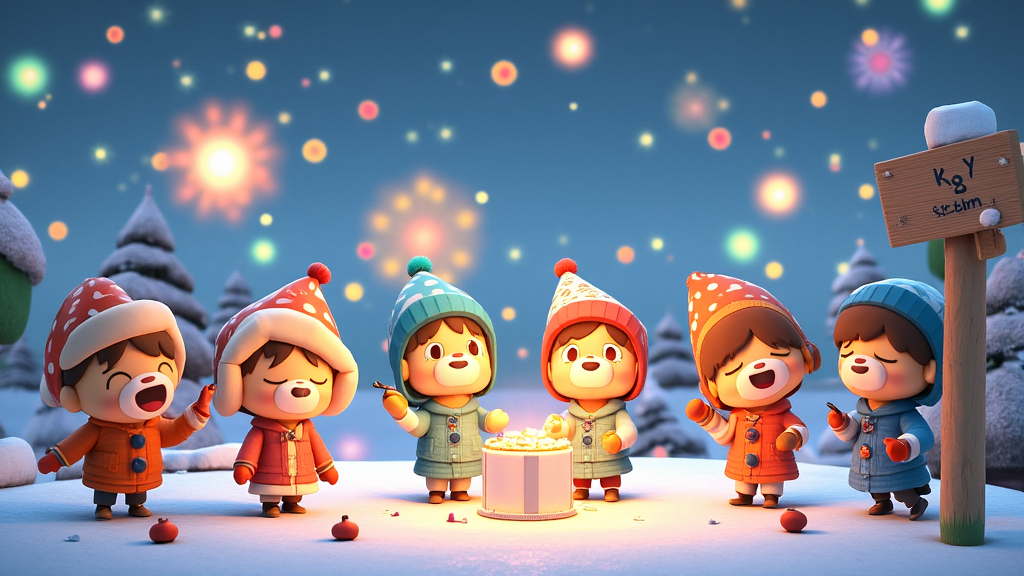
Multiplayer & Visiting Friends (Step-by-Step Play Guide)
Multiplayer connectivity requires Nintendo Switch Online membership ($19.99 annually) for internet-based visiting, while local wireless enables nearby player interaction without subscription requirements. Both options support up to 8 simultaneous players on single islands for collaborative activities and social experiences.
Online visit setup involves:
- Open airport gates through Orville conversation selection
- Choose visitor parameters (friends only, friends of friends, or anyone with Dodo Code)
- Generate 5-character Dodo Code for temporary access sharing
- Share code through secure communication with intended visitors
- Monitor arrival notifications and greet visitors appropriately
- Close gates when sessions complete to resume individual gameplay
Visit etiquette includes: requesting permission before picking flowers/fruit, avoiding running through flower beds, bringing gifts for hosts, respecting island themes and decoration, and following host-established rules. Poor visitor behavior can result in session termination and potential friend network consequences.
Collaborative activities include: catalog parties (item sharing for future purchasing), trading sessions (material/DIY/item exchanges), tour experiences (showcasing island designs), fishing/bug catching competitions, and seasonal event participation. Organized multiplayer requires coordination through voice chat or text communication platforms.
Dream Addresses enable safe island exploration without requiring real-time host presence or risking island modifications. Popular dream islands showcase advanced design techniques, theme implementations, and creative solutions for inspiration and learning opportunities.
Trading safety involves: verifying item authenticity, using secure payment methods, maintaining reputation in community networks, and documenting transaction details. Established trading communities provide rating systems for trustworthy participant identification and fraud prevention.
Multiplayer and global connectivity in games share the ambition of connecting people globally, much like how Starlink is bringing the internet to remote places with its satellite network. For insights into worldwide connectivity advances, read about Starlink’s satellite revolution.
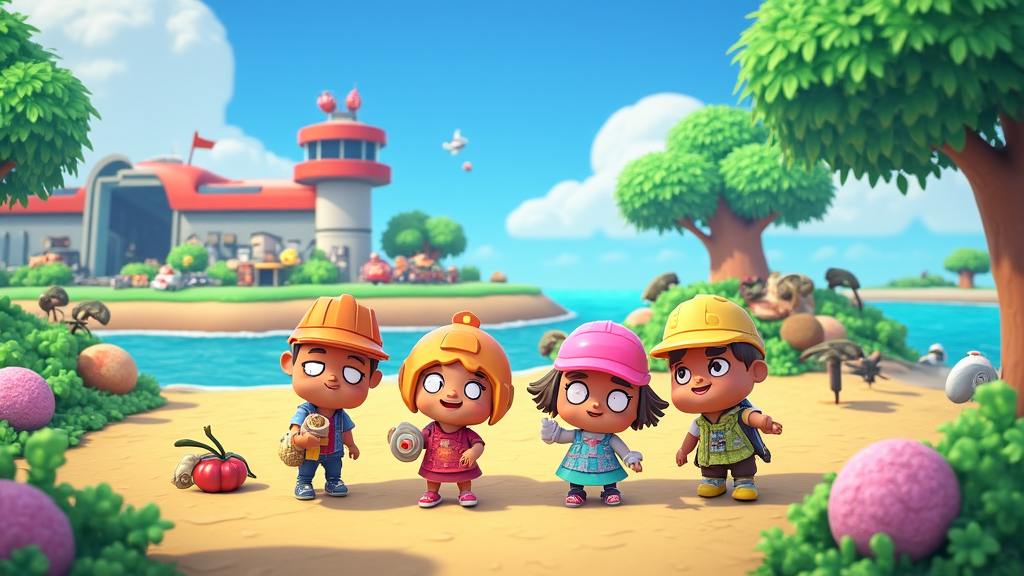
Advanced Gameplay Strategies (Catalog, Breeding, Time Travel)
Advanced Animal Crossing strategies require sophisticated understanding of game mechanics, market dynamics, and system optimization to achieve completion goals and maximize efficiency in long-term projects. Expert players implement multiple simultaneous systems while maintaining sustainable progression rates.
Time travel involves manipulating Nintendo Switch system clock to access different dates, seasons, and events outside their natural occurrence windows. Benefits include accelerated construction completion, seasonal item collection, and event participation flexibility. Risks include villager departure, flower wilting, increased weed growth, and cockroach infestations requiring cleanup effort upon return to normal time.
Flower breeding requires understanding genetic inheritance patterns for hybrid color production. Complex breeding chains involve multiple generation crosses to achieve rare colors like blue roses (requiring 25+ days optimal conditions) and green mums (needing purple mum intermediates).
Catalog completion involves encountering 2,600+ items through purchasing, crafting, trading, and event participation. Systematic approaches include daily shop checking, catalog party organization, trading network utilization, and seasonal preparation for time-limited acquisitions.
Nook Miles farming strategies optimize achievement completion for maximum point generation. High-value achievements include: 5,000 fish caught (3,000 miles), 5,000 bugs caught (3,000 miles), 300 DIY recipes learned (2,000 miles), and complete fossil collection (1,000 miles). Daily task completion provides consistent earning opportunities through renewable achievement categories.
Perfect hybrid flower arrangements require: specific spacing patterns, optimal watering schedules, visitor watering bonuses (increased spawn rates), and patience for RNG-dependent breeding outcomes. Advanced breeders maintain detailed records of parent genetics and breeding generation tracking.
Villager cycling strategies enable rapid turnover for personality optimization or popular character acquisition. Time travel acceleration reduces natural 15-day waiting periods between departures, while campsite manipulation influences recruitment options.

Island Design Inspiration & Themed Ideas
Successful island themes require cohesive aesthetic vision, strategic space allocation, and systematic implementation across all development phases. Popular 2025 themes blend traditional concepts with contemporary design trends to create unique and memorable island experiences.
Cottagecore aesthetic emphasizes: rustic wooden furniture, wildflower meadows, vegetable gardens, natural pathways, earth-tone color palettes, and cozy residential areas. Key items include wooden signs, log furniture series, flower crowns, and natural decorative elements. Implementation requires extensive flower cultivation and wood resource accumulation.
Modern minimalist designs feature: clean geometric shapes, neutral color schemes, efficient space utilization, contemporary furniture, and uncluttered layouts. Strategic negative space usage creates sophisticated visual impact through selective decoration placement and pathway optimization.
Fairy tale themes incorporate: magical elements, pastel color palettes, whimsical furniture, fantasy decorations, and storybook-inspired layouts. Popular sub-themes include princess castles, enchanted forests, magical gardens, and fairy villages requiring extensive customization and creative decoration arrangements.
Urban industrial concepts utilize: concrete pathways, metal furniture, city-inspired decorations, efficient transportation networks, and commercial district organization. Modern infrastructure elements create metropolitan atmosphere through strategic building placement and contemporary aesthetic choices.
Tropical paradise designs emphasize: palm trees, beach areas, tropical furniture, bright colors, water features, and resort-style amenities. Effective implementations require systematic coconut tree planting and beach decoration optimization for authentic island vacation atmosphere.
Historical themes recreate specific time periods through period-appropriate furniture, clothing, decorations, and architectural elements. Popular eras include medieval villages, Victorian towns, 1950s suburbs, and futuristic cities requiring extensive research and careful item selection.
If you want to bring even more creativity into your digital (or real) world, explore how Google’s Gemini AI is helping people seamlessly blend visuals, audio, and text—giving you even more inspiration for your in-game or real-world themes. Explore Google Gemini features and benefits.
Image description: Panoramic view showcasing four distinct themed island sections – cottagecore village, modern plaza, fairy tale forest, and tropical beach resort – seamlessly connected through aesthetic transition zones.

Happy Home Paradise DLC: Features & Vacation Design Guide
Happy Home Paradise downloadable content ($24.99) expands Animal Crossing: New Horizons with comprehensive interior design mechanics, professional decoration tools, and villa customization systems. This career-focused expansion provides structured progression through client satisfaction and creative challenge completion.
DLC access requires: base game ownership, Nintendo Switch Online membership, and downloadable content purchase. Installation adds archipelago access through Dodo Airlines for professional decoration work and skill development opportunities.
Core features include:
- Client consultation system for personalized design requests
- Room partitioning tools for space organization flexibility
- Ceiling and accent lighting for atmospheric enhancement
- Polish techniques for professional finishing touches
- Employee advancement through performance evaluations
- Personal facility customization for individual expression
Vacation home design follows systematic consultation processes: client interview (understanding preferences), space planning (room layout optimization), furniture selection (theme-appropriate choices), and presentation (final reveal and feedback). Successful designs balance client requirements with creative innovation for maximum satisfaction scores.
Advanced techniques include: room partitioning for functional zones, lighting design for mood enhancement, color coordination for aesthetic harmony, and scale balancing for visual proportion. Professional certification requires mastering all decoration systems through progressive skill challenges.
Unlockable features through progression: additional furniture access, advanced customization options, special client types, facility upgrades, and personal island integration. Career advancement provides sustainable engagement beyond main island completion goals.
Cross-integration with main gameplay enables technique application on personal islands, expanded furniture catalog access, and professional skill utilization for enhanced home decoration projects.
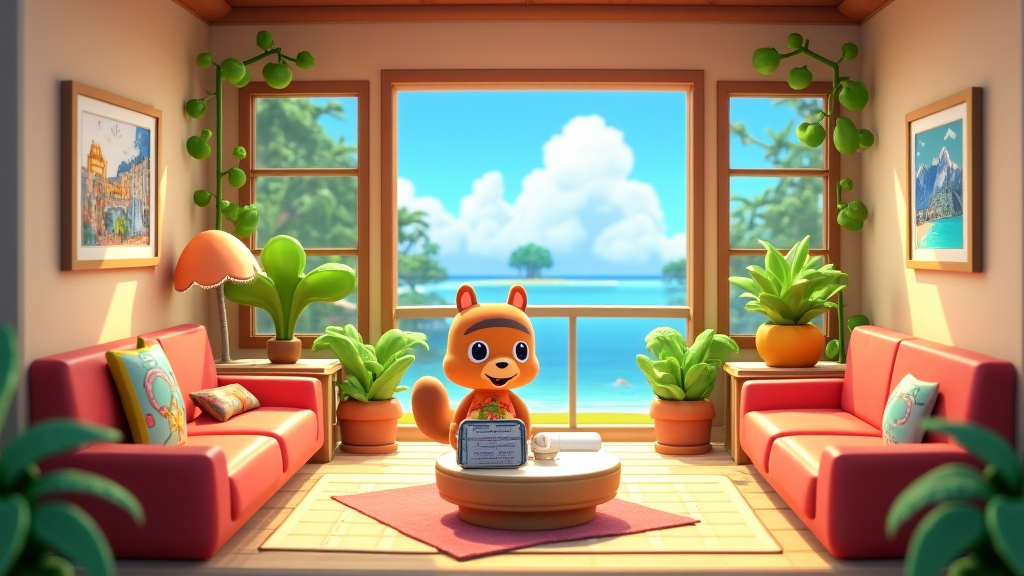
Animal Crossing Community Resources & Tools (Design Platforms, Trading)
Animal Crossing’s vibrant community ecosystem provides extensive resources for gameplay enhancement, design inspiration, and social connection through dedicated platforms, tools, and networks. Successful players leverage multiple community resources for comprehensive support and collaboration opportunities.
Essential community platforms include:
- Reddit (r/AnimalCrossing, r/ACTrade): trading, discussion, inspiration sharing
- Discord servers: real-time communication, organized events, trading coordination
- Nook Exchange: catalog tracking, wishlist management, value assessment
- ACNH.Guide: comprehensive database, event tracking, completion tools
- Turnip Prophet: price prediction, market analysis, profit optimization
- AC Pattern Tool: custom design creation, QR code generation, sharing
- Meteonook: weather prediction, shooting star forecasting, optimal timing
Trading safety protocols include: reputation verification, secure communication, item authentication, and transaction documentation. Established marketplaces provide rating systems for trustworthy participant identification and fraud prevention mechanisms.
Design resource libraries offer: custom patterns, QR codes, inspiration galleries, tutorial content, and technique demonstrations. Popular creators provide seasonal updates and theme-specific content for diverse aesthetic preferences.
Tool integration enhances gameplay efficiency through automated tracking, prediction algorithms, optimization suggestions, and community connectivity features. Advanced players maintain multiple tool subscriptions for comprehensive gameplay support.
Community events include: catalog parties, design competitions, trading fairs, themed tours, and collaborative projects. Regular participation builds network connections and provides access to exclusive opportunities and resources.
If you’re interested in using AI-driven design or accessibility tools outside of Animal Crossing, discover the latest advances in text-to-speech and voice synthesis with this comprehensive guide to the best TTS software.
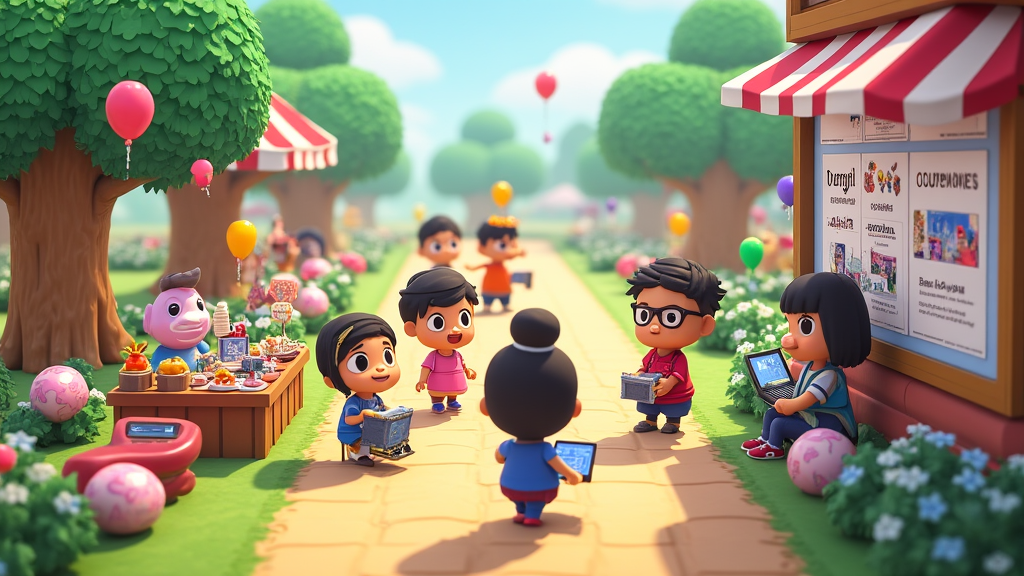
Frequently Asked Questions (Boolean, Definitional, Comparative)
Does Animal Crossing have an ending?
Animal Crossing: New Horizons does not feature a traditional ending or completion state. The game continues indefinitely through seasonal cycles, ongoing events, and community interactions while players pursue personal goals like island completion, catalog collection, or creative projects.
What does each personality type mean?
Animal Crossing features 8 distinct personality types that determine villager dialogue patterns, activity preferences, and interaction styles: Normal (friendly, caring), Peppy (energetic, fashion-focused), Snooty (sophisticated, elegant), Uchi (tough, protective), Lazy (relaxed, food-obsessed), Jock (athletic, competitive), Cranky (grumpy, traditional), and Smug (charming, confident).
Is Nintendo Switch Online required?
Nintendo Switch Online membership ($19.99 annually) is required only for internet-based multiplayer features including visiting other players’ islands, trading with distant friends, and accessing Dream Addresses. Local wireless multiplayer functions without subscription requirements for nearby player interaction.
What are all villager species available?
Animal Crossing: New Horizons includes 35 different animal species: Alligator, Anteater, Bear, Bird, Bull, Cat, Chicken, Cow, Cub, Deer, Dog, Duck, Eagle, Elephant, Frog, Goat, Gorilla, Hamster, Hippo, Horse, Kangaroo, Koala, Lion, Monkey, Mouse, Octopus, Ostrich, Penguin, Pig, Rabbit, Rhinoceros, Sheep, Squirrel, Tiger, and Wolf.
Which version is best for beginners?
Animal Crossing: New Horizons represents the most beginner-friendly entry in the series, featuring comprehensive tutorials, quality-of-life improvements, and extensive customization options. The 2025 version includes 4+ years of content updates and community-driven improvements for optimal new player experience.
What are the best money-making methods?
Top money-making strategies include turnip trading (500,000+ Bells daily), money tree cultivation (30,000 Bells daily), hot item crafting (50,000+ Bells daily), and rare fish/bug collection (varies by season). Diversification across multiple methods ensures consistent income while minimizing market risk exposure.
How long does island development take?
Complete island development typically requires 6-12 months for casual players implementing all major features including terraforming, villager recruitment, infrastructure completion, and aesthetic refinement. Intensive players can achieve basic completion within 2-3 months through optimized strategies and time travel utilization.
Can multiple players share one island?
Nintendo Switch supports up to 8 player profiles sharing a single island with the primary account serving as island representative. Secondary players have limited development authority but can participate in decoration, collection, and social activities within the shared environment.




